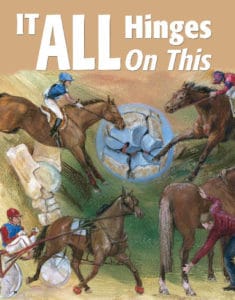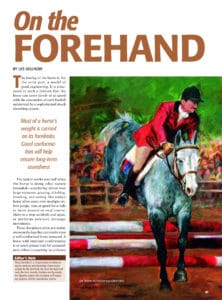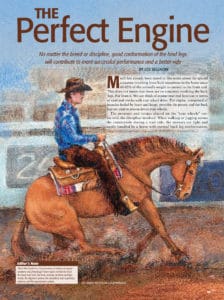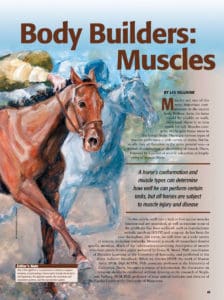
Managing Mules
More people today are turning to mules to take advantage of the temperament and work ethic of these horse/donkey crosses.


More people today are turning to mules to take advantage of the temperament and work ethic of these horse/donkey crosses.
The “unwanted horse” dilemma in the United States is akin to the awakening of a sleeping giant. Just how major the problem is and who or what i

Equine authorities discussed numerous infectious disease topics and studies during the 2007 AAEP Convention, including antibody titer levels, azithromycin to help prevent Rhodococcus equi infection, enrofloxacin to treat Leptospira infection of the eye, influenza/West Nile virus vaccines, dentistry, and Lawsonia.
We often tend to view the equine industry as a separate entity–one that stands
In order to establish a good relationship with a horse, one has to spend hands-on time with them. We do this with pet dogs, he said, but often we don’t bother spending time with our horses until we want to use them. They should be touched, groomed
During the annual convention of the American Association of Equine Practitioners, one day is set aside for horse owners in the area to listen to experts in the field lecture and demonstrate on specific aspects involved in the overall wellness,
Experienced horse people who notice neglect should contact the proper authorities to ensure the best outcome for the horse involved.
Traditionally, one of the stronger parts of each AAEP convention program is the time devoted to reproduction. The convention held in Orlando was no exception. It began with an in-depth session titled “Perinatology–End of Pregnancy Through
Acupuncture can be effective in treating chronic pain and musculoskeletal disorders such as lameness, Heiderich told her listeners. She said it also can be beneficial for eye problems, mild colic, respiratory disorders, anhidrosis (the inability
Varner directed the final two hours to a discussion of stallion fertility and told the group, for example, that morphologically abnormal sperm often do not have a negative impact on normal sperm.

This first article of a 12-part series on equine anatomy and physiology discusses basic terminology, the horse’s largest organ (his skin), and how horses and humans are alike (and different).

There are 205 bones in the horse’s skeleton, and the spot where one or more bones join is the joint. This installment of the anatomy and physiology series focuses on these critical areas of movement.

The foreleg of the horse is, for the most part, a model of good engineering. Most of a horse’s weight is carried on its forelimbs. Good conformation will help ensure long-term soundness.

No matter the breed or discipline, good conformation of the hind legs will contribute to more successful performance and a better ride. We want a horse to have excellent rear leg conformation so that it can tolerate the demands placed on it.

Anatomy and physiology of the horse’s head and neck, and related structures such as the eyes, ears, mouth/teeth, and upper respiratory tract.

A horse’s conformation and muscle types can determine how well he can perform certain tasks, but all horses are subject to muscle injury and disease. In this article, we’ll take a look at how equine muscles function and are nourished.
Stay on top of the most recent Horse Health news with